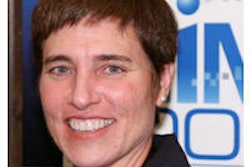
GRAPEVINE, TX - The imaging informatics community must work together to innovate and then translate imaging IT advances into practice, said Dr. Bradley Erickson, PhD, in the opening session of the Society for Imaging Informatics in Medicine (SIIM) annual meeting.
In the Sam Dwyer Lecture, Erickson called on SIIM 2013 attendees to follow the example of the late Dr. Sam Dwyer, a legendary PACS researcher who applied the often conflicting concepts of innovation and translation. He was both a quintessential scientist and a maverick who was willing and able to go outside of his comfort zone, said Erickson, a professor of radiology at the Mayo Clinic in Rochester, MN.
"We must aspire to that same dualism in informatics," he said. "We must understand the central elements of each side in order for everyone to [collaborate.] We must study and advance the science of informatics to evolve our systems to higher levels, while also permitting and encouraging and participating in occasional disruption that revolutionizes the field. There has never been a better time to go out and innovate, so go out and break some rules."
Innovation vs. translational research
Although innovation and translational research are often comingled, they are actually very different, Erickson said. Translational research involves the process of taking something proved in the lab and then making the necessary adaptations for it to work in the clinic. Innovation, however, is fundamentally disruptive and involves the use of a tool designed for one task and adapting it to address a different problem, Erickson said.
"The two are fundamentally different and generally competitive but can coexist under the right conditions," he said.
Innovation requires an organization with characteristics such as a tolerance for breaking rules and an instilled desire for cross-pollination, while translation requires the organizational resources and process for taking the best discoveries and learning how to apply them in the real world, Erickson said.
Yahoo CEO Marissa Mayer recently said that the opposite of innovation isn't stagnation, but rather execution. Innovation is disruptive to business processes and execution, and that is not something to be taken lightly, Erickson noted.
"Innovation can disrupt and possibly destroy a business," he said. "This is a key concept that I think is not well-recognized. Innovation and translation are natural enemies, but organizations want both. The art of running a successful organization is recognizing the key components of innovation and translation so that they can be combined in the right amounts at the right time."
Innovation
Erickson shared his four "Ps" for innovation:
- Principle
- Prototype
- Production
- People
Most innovations takes months or years to develop, and innovation is usually the result of the collision of many ideas or concepts. Furthermore, many concepts or hunches come from other people and come together in one person's mind.
"Innovation is not a simple, predictable process," he said.
Once you have an idea, it's critical to narrow it down and focus on the essentials, he added. A recent study found that 50% of products that had been returned for refunds worked just fine; the problem was that they were too complicated.
"Now think about your latest PACS; how many of you would say there is feature-itis setting in?" he asked. "I certainly would."
A successful innovation will put only the features that are critical into the product. Somewhat counterintuitively, restricting options actually increases the creativity needed for innovation -- as necessity is the mother of invention.
"A product will be successful when it solves a problem," he said.
This simplification challenge is not just for vendors but also for informatics scientists, according to Erickson.
"We need to rethink about how PACS is done and think about how to simplify it to make it work better," he said.
Innovating is tough, and don't expect to be praised for it, Erickson noted.
"Innovation will require you to disrupt the plans and products of other people and they're not likely to be happy about that," he said. "If you are praised for being innovative while you're implementing your innovation, you need to be careful because something's wrong."
Innovation is also not usually a team sport, with innovations often coming from just one person. Organizations can promote innovation by promoting intersection and overlap of people with different skills.
"Recognize and reward individuals that rock the boat in a constructive disruptive way," he said. "Look for and promote those with a track record of innovation."
The best way to kill innovation is to get a committee working on it, according to Erickson. Committees are fundamentally anti-innovative.
Translating into practice
There are two types of translational research: Type 1 involves translating basic research into a treatment, while type 2 identifies best practices that let the treatment be used anywhere, Erickson said.
While institutional innovation is an oxymoron, it is critical that organizations be built to translate. Translation is a process that must be institutionally directed.
Promoting translation requires a supportive environment with financial resources, business development expertise, and regulatory expertise, he said.
Good decision-making is also required to select projects best suited for the host institution. In an era of declining reimbursement, organizations are understandably reluctant to make large investments in disruptive technologies, Erickson said.
"Meaningful use is a recognition of this challenge by the government, but it has been disappointingly silent in the area of imaging IT," he said. "That means we who are in healthcare organizations must work with industry to identify opportunities to make meaningful disruptions in imaging and IT systems that do not require substantial investments. That's a tall order, but it's possible."
The quest to improve standardization in healthcare is complicated by differences in language. That problem is being addressed by SIIM's Workflow Initiative in Medicine (SWIM), which features the SWIM Lexicon to help measure and improve clinical imaging workflow, Erickson said.
Having the proper incentives for the whole team to work together is key to producing an innovative organization. IT departments, physicians, and vendors don't have a lot of positive incentives at the moment to innovate.
"There's no single formula that makes innovation and translation happy partners," he said. "There are unique formulations dependent on conditions. Each innovator needs translational programs, and it's our responsibility to figure out how to do that."
SIIM, as an organization with multidisciplinary membership, is well-positioned to tackle this problem, Erickson said. He called on SIIM members to assist in the process.
"Translation is occurring everywhere, but it's taking too much time," he said. "We need more of you to participate in translation and getting [new] ideas and concepts into real products."



















